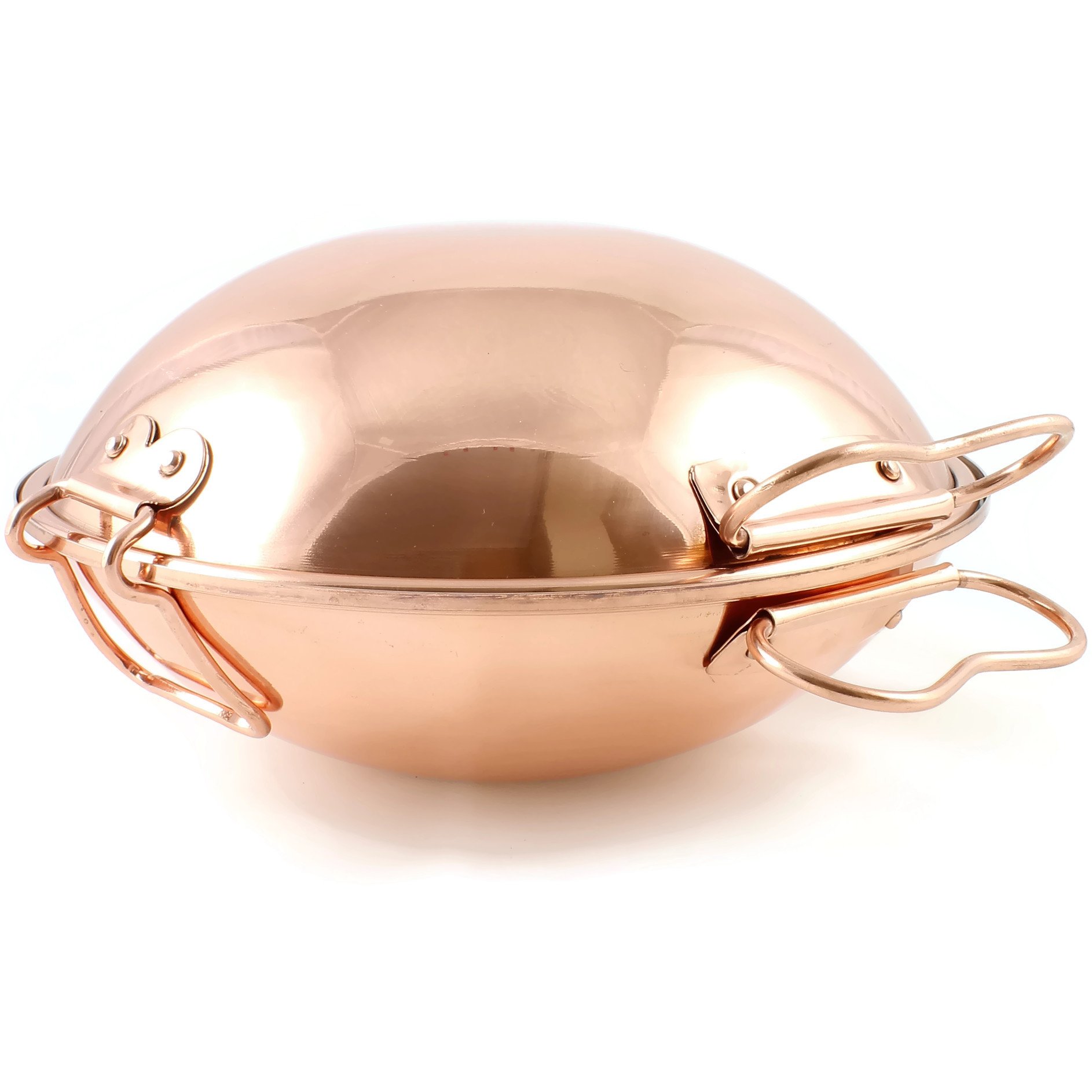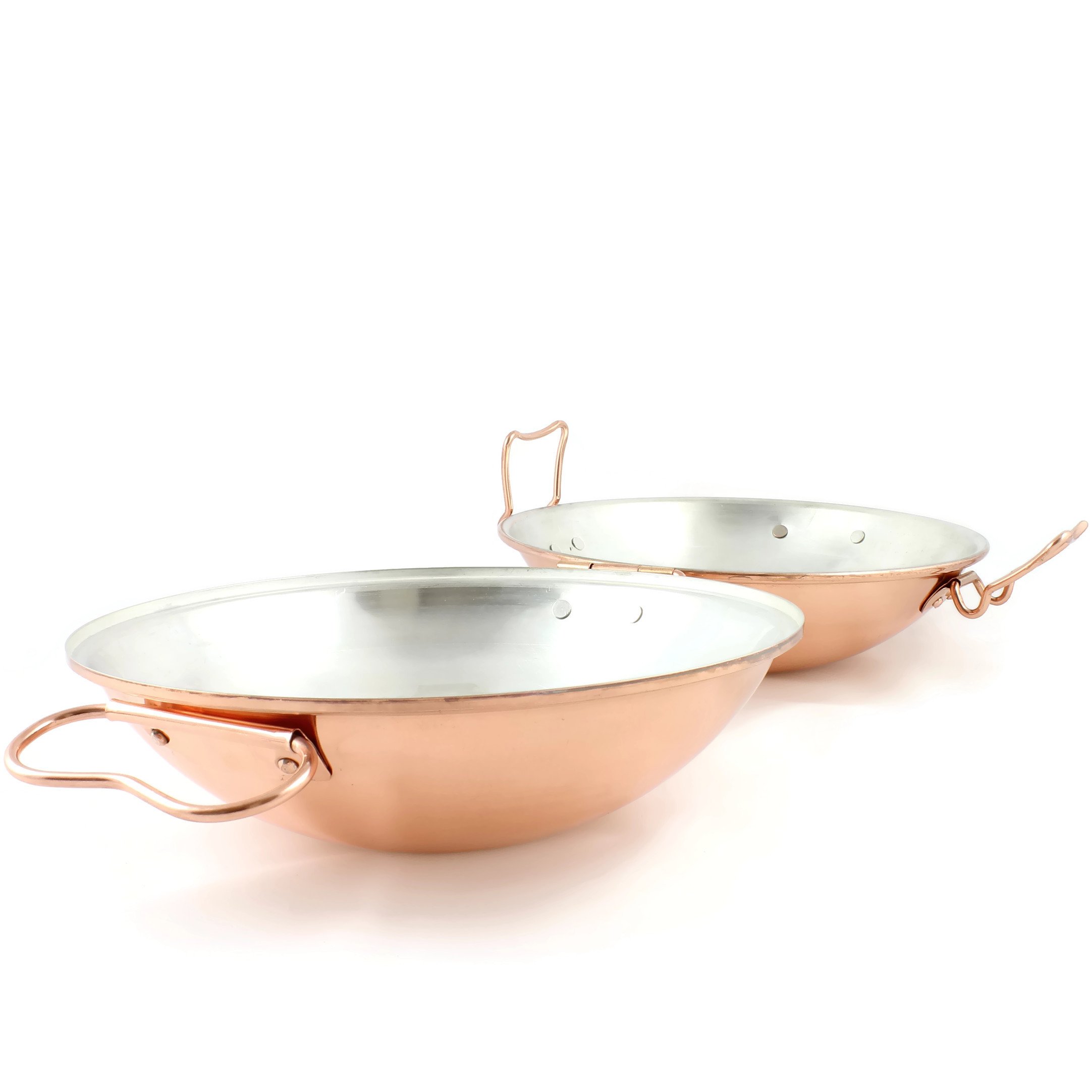تسليم إلى Morocco
Iللحصول على أفضل تجربة احصل على التطبيق
معلومات عنا
حقوق الطبع والنشر © 2024 Desertcart Holdings Limited





Like the pressure cooker, the shape of the pan ensures that the steam from cooking food is kept in the utensil, generating an increase in pressure and allowing cooking temperatures above 100 ° C. In addition, its concave shape, together with the excellent thermal conductivity of copper, means that heat is distributed more evenly inside, thus ensuring the most uniform cooking of foods. At low heat, for example, this distribution of heat makes the utensil more energy efficient. The origins of this cooking device are lost in time. At the beginning of the 20th century, Portuguese hunters brought onions and tomatoes with them, so that they could cook game in a wood fire. Later, in the 1960s, the cataplana became a popular way of cooking fish and seafood in the Algarve. Since then, it has become a hallmark of Portuguese cuisine. In addition, the cooking process used by Cataplana avoids the loss of ingredients and aromas, ensuring a full and excellent taste. On the other hand, cooking on the flat cataplana is healthier because recipes use less fat, and therefore contain fewer calories. Although not hermetically sealed like a pressure cooker, the cataplana works in a similar way, and can therefore be described as an early version of the modern utensil. The wider use of the pressure cooker, which is very common in today's homes, does not seem logical, however, given the clear advantages that its counterpart, the flat tasting, offers and that should give it a place of honor in the home kitchen.
ترست بايلوت
منذ يوم واحد
منذ شهر